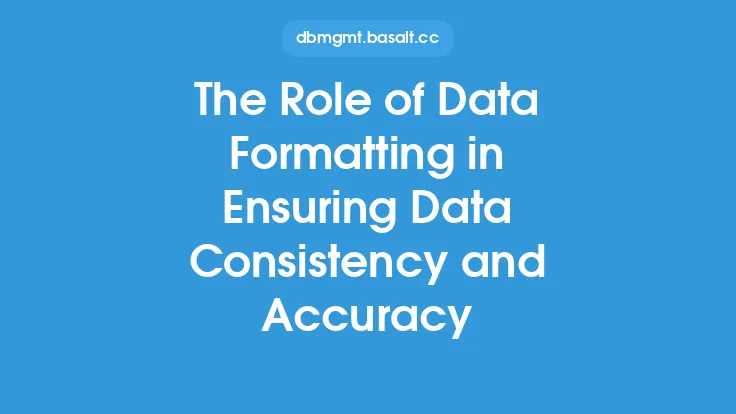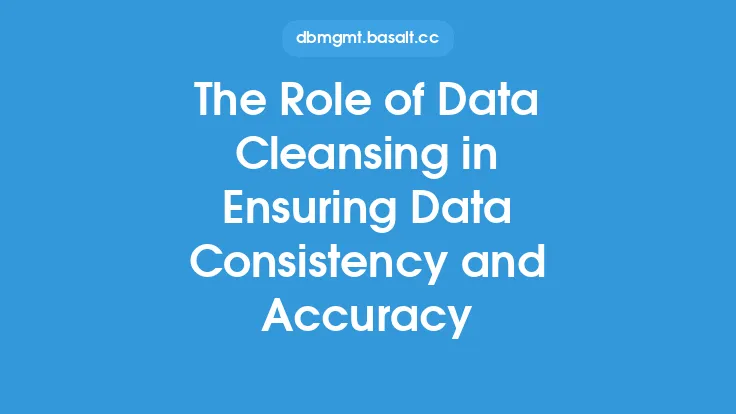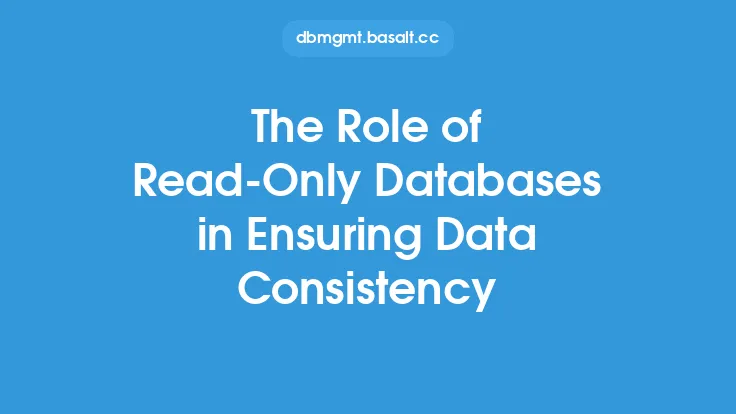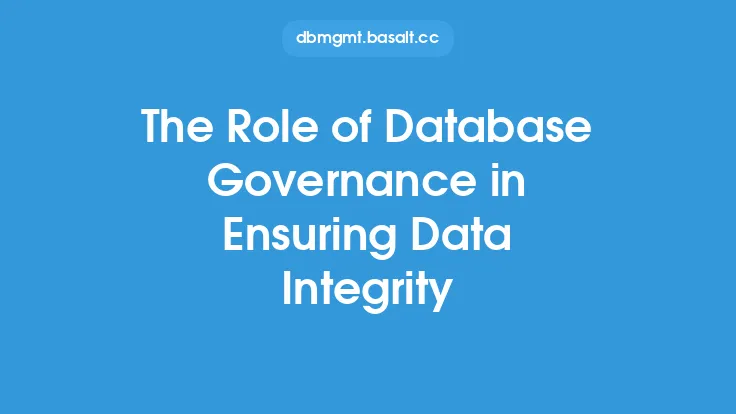Data consistency is a critical aspect of any data management system, as it ensures that data is accurate, reliable, and usable across different applications and systems. One of the key factors that contribute to data consistency is data standardization. Data standardization refers to the process of establishing a common format, structure, and definition for data elements across an organization or system. This process involves defining a set of rules, guidelines, and standards for data collection, storage, and exchange, ensuring that data is consistent, complete, and accurate.
Introduction to Data Standardization
Data standardization is essential in today's data-driven world, where organizations rely on data to make informed decisions, improve operations, and drive business growth. Without standardization, data can become inconsistent, incomplete, and inaccurate, leading to poor decision-making, inefficient operations, and decreased competitiveness. Data standardization helps to ensure that data is consistent across different systems, applications, and departments, enabling organizations to integrate data from various sources, improve data sharing and collaboration, and enhance data analysis and reporting.
Benefits of Data Standardization
The benefits of data standardization are numerous and significant. Some of the key benefits include improved data quality, increased data consistency, enhanced data sharing and collaboration, better data analysis and reporting, and improved decision-making. Data standardization also helps to reduce data errors, improve data integrity, and increase data security. Additionally, data standardization enables organizations to improve their data governance, compliance, and risk management, as well as enhance their overall data management capabilities.
Data Standardization Techniques
There are several data standardization techniques that organizations can use to ensure data consistency. Some of the most common techniques include data profiling, data cleansing, data transformation, and data validation. Data profiling involves analyzing data to identify patterns, trends, and inconsistencies, while data cleansing involves correcting errors, filling in missing values, and removing duplicates. Data transformation involves converting data from one format to another, while data validation involves checking data against a set of rules and standards to ensure accuracy and consistency.
Data Standardization Tools and Technologies
There are several data standardization tools and technologies available that can help organizations implement data standardization. Some of the most common tools and technologies include data integration platforms, data quality tools, data governance platforms, and data standardization software. Data integration platforms enable organizations to integrate data from various sources, while data quality tools help to identify and correct data errors. Data governance platforms provide a framework for managing data standards, policies, and procedures, while data standardization software provides a set of tools and templates for standardizing data.
Challenges and Limitations of Data Standardization
Despite the benefits of data standardization, there are several challenges and limitations that organizations may face when implementing data standardization. Some of the key challenges include data complexity, data volume, data variety, and data velocity. Data complexity refers to the complexity of data structures and formats, while data volume refers to the large amounts of data that organizations must manage. Data variety refers to the different types of data that organizations must manage, while data velocity refers to the speed at which data is generated and processed. Additionally, organizations may face challenges related to data governance, data quality, and data security, as well as cultural and organizational barriers to data standardization.
Best Practices for Data Standardization
To overcome the challenges and limitations of data standardization, organizations should follow best practices for data standardization. Some of the key best practices include establishing a data governance framework, defining data standards and policies, implementing data quality controls, and providing training and support for data standardization. Organizations should also establish a data standardization team, develop a data standardization roadmap, and monitor and evaluate data standardization progress. Additionally, organizations should consider using data standardization tools and technologies, as well as leveraging industry standards and best practices for data standardization.
Conclusion
In conclusion, data standardization is a critical aspect of ensuring data consistency in today's data-driven world. By establishing a common format, structure, and definition for data elements, organizations can improve data quality, increase data consistency, and enhance data sharing and collaboration. While there are challenges and limitations to data standardization, organizations can overcome these challenges by following best practices for data standardization, leveraging data standardization tools and technologies, and establishing a data governance framework. By prioritizing data standardization, organizations can improve their overall data management capabilities, drive business growth, and stay competitive in a rapidly changing data landscape.





